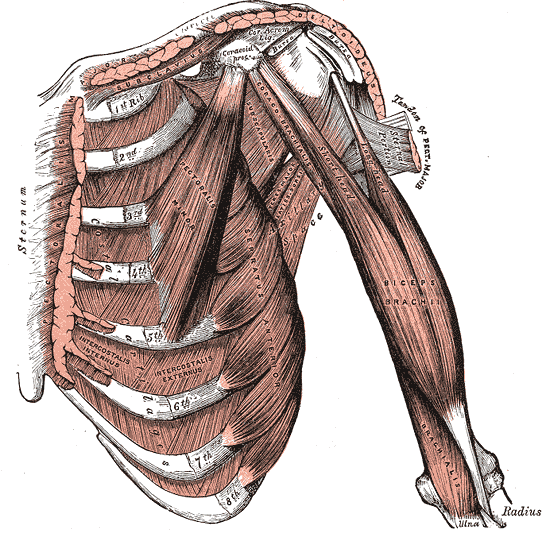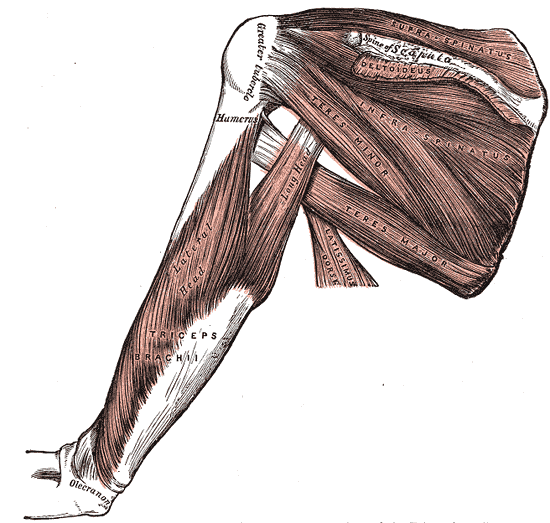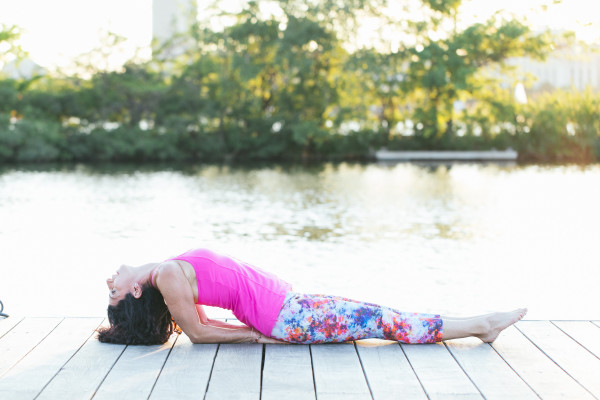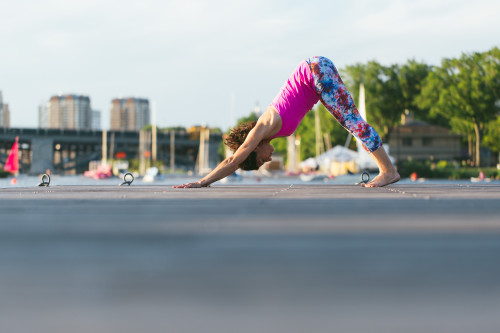I have written before about my passion for sharing the anatomy behind the poses with my students. As I’ve spent more time studying anatomy, I’ve uncovered lots of little (but really BIG) things that can make or break the practice. One of the most basic revelations (aided by my studying the writings and videos of fabulous teacher, Jill Miller of Yoga Tune Up) is that the best position for the shoulders is slightly down the back and this shoulder position is greatly enhanced by having our palms face forward (as in Anatomical Position- see my earlier post).
But we need to realize that interestingly enough, the hands actually face DOWN when we are in many, many poses we take all the time. ( Downward Facing Dog, anyone?) So, this automatically puts us in a tough spot when we are trying to keep the shoulders in that nice, healthy position.
Think about this. If you’re reading this while sitting, you are most likely sitting with a bit of a hunch in your shoulders. We do it all the time. If you’re not sitting, move to a sitting position. Let your shoulders relax forward. Turn your hands down (as if you were typing at the computer). Notice how the shoulders roll inward. This is basically “internal rotation” and it’s the role of one of the rotator cuff muscles, the Subscapularis:

If you look at this picture, you’ll see the Subscapularis sits “inside” your shoulder blade. I like to say it’s viewed as if you were looking at someone from the front and using your “X Ray vision” to see “inside” them. As you face them, you’d be looking “through” their chest and there, inside the shoulder blade, sits this muscle. Because it attaches to your humerus (upper arm bone) it creates that “curled in” or “hunched” effect when we sit and let our shoulders roll inward.
When we take poses on our hands, like Downward Dog and Crow, the same thing can happen. We can hunch. To make matters worse, we’re putting weight on our hands so we’ve “upped the ante” so to speak in terms of the risk of hunching. If you’ve ever tried Crow Pose with the idea of “fighting the hunch,” it’s hard! You have to push the floor away and lift the head a little bit, or you’ll just drag yourself right into the hunch!

So, what are we to do? Well, we have to combat the internal rotators, like the Subscapularis, with another muscle. A muscle that “does the opposite.” And that muscle, another part of the Rotator Cuff muscle group is called the Teres Minor:

Just to orient you, we’re now looking at the BACK of a person, not the front, as we were in our view of the Subscapularis. So, as we look at the back, we can see the Teres Minor, just like the Subscapularis, attaches to the humerus but it starts on the scapula or shoulder blade itself, specifically the lateral border. So, when it contracts or shortens, it will roll the shoulder blade OPEN versus creating that hunching shape. You can think of the Teres Minor at work in poses like Fish:

There’s certainly no hunching in this one!
So, let’s go back to our original premise. The shoulders are best when they are slightly down the back (not shoved, not forced). We know hunching is a pretty unhealthy shape for the upper body and now we know we want to use more of our Teres Minor muscle instead of our Subscapularis in order to “erase the hunch.” So, how can we tap into this muscle in poses like Downward Dog and Crow, for instance?
We have to create a little external rotation in the shoulders even though our hands are facing down. Now that we know the the Teres Minor connects the humerus to the scapula, we need to move our humerus somewhat, in order to activate this muscle.
Try this: Come onto your hands and knees. Look at your upper arm bones. Roll the inner eyes of the elbows forward. As you do this, you will literally SEE your upper arm bones roll outward. If you do it and focus on the shoulder blades, you’ll feel them move slightly down your back instead of up towards your ears. THIS IS EXTERNAL ROTATION and it’s the job, in part, of the Teres Minor. When I share this with students before class and then we take that first Downward Dog, I can see them working with the action and it’s so cool! I love seeing my students put the anatomy into action and making it work for them.
The next time you come into Downward Dog, think “inner eyes of the elbows forward” and see how it feels. If you couple that with a slight bend in the knees and a push off the floor, you’ll activate your triceps to lengthen the arms, the teres minor to open the shoulders and you’ll get great access to your spine because your knees are not locked.
Happy Yoga’ing!

